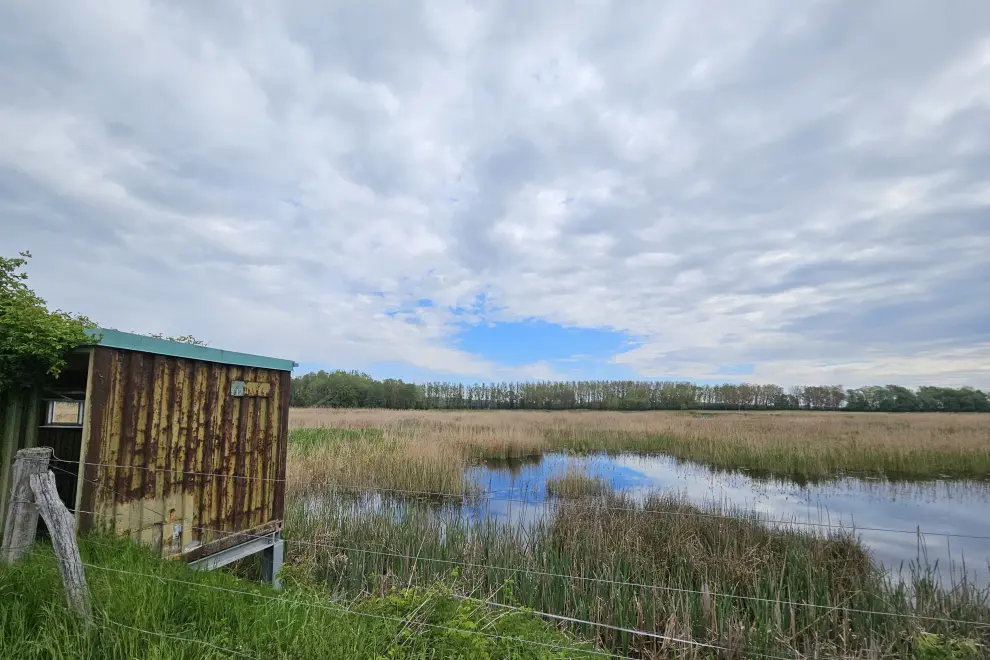Birds catching breath in one-of-a-kind nature reserve
Ormož
Ormož Basins, a nature reserve in northeastern Slovenia famous for its rich birdlife.
Photo: Andreja Seršen Dobaj/STA
Ormož Basins, a nature reserve in northeastern Slovenia famous for its rich birdlife.
Photo: Andreja Seršen Dobaj/STA
The Ormož Basins Nature Reserve in northeastern Slovenia is a key stopover for migratory birds and an important nesting site for waterbirds. Home to endangered or rare species, the wetland is a place of serenity and bird-watching opportunities, with a unique origin story to boot.
The nature reserve is located on the former site of wastewater ponds of the now-closed Ormož Sugar Factory, where in the 1980s members of the Bird Watching Association (DOPPS) recognised the potential to create what is now a nexus of ornithological diversity in the country and an important Natura 2000 protected area.
The 55-hectare wetland lies within the Drava River ecosystem by Lake Ormož, surrounded by flooded forest, which the organisation says is "a rare remainder of an extensive riparian forests in Slovenia".
Back when the factory, which opened in the late 1970s, was still running, birds were already nesting there. Together with environmentally conscious factory employees, DOPPS took measures to further encourage birdlife.
After the factory closed in 2007 due to EU sugar sector reform, the organisation was quick to propose turning the area into a nature reserve. Being in favour of the idea, the majority owner, the Dutch corporation Royal Cosun, donated the entire area to DOPPS in 2010.
The wetland, which was declared nature reserve in 2017 following EU-funded remediation measures, uses shipping containers as observation posts to remind visitors of its past cohabitation with the factory.
"We wanted to preserve the feel of the former industrial area, because in this case, it really was an example of very good cooperation between industry and nature conservation, something that is otherwise extremely rare.
"At the same time, it's about reusing things that would otherwise have gone to waste, but are still serving us well," Ana Vaupotič, Ormož Basins manager and a DOPPS member, has told the Slovenian Press Agency.
The wetland is of exceptional national and international significance for many endangered bird species since it provides a key stopover for migratory birds. Further south there are fewer and fewer areas where birds can rest and feed during migration.
A total of 30 migratory species appear regularly, and their numbers may sometimes reach as many as tens of thousands of birds, among which the wood sandpiper and the ruff are the most common.
Nearly 30 breeding waterbird species have been spotted in the reserve, including endangered or rare species such as the little crake, a very small bird that can be found in reed beds, the ferruginous duck, the black-winged stilt, the common redshank with its loud piping call, and the common tern, known for its agile flight.
In addition to all the birds living in the wetland or using it as a stopover during migration, Ormož Basins are also home to beavers, otters and water buffaloes, which were introduced to graze freely, so that there is no need for mowing.
Mass tourism is not acceptable in the area, which is why DOPPS primarily welcomes individuals or small groups. Admission is free, but guided tours are a must for groups of more than 10 people in order to protect the reserve.



